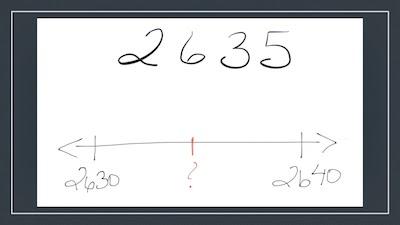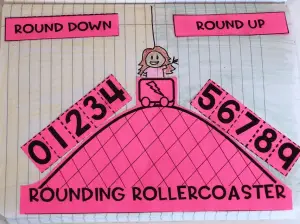While you may know all the rounding numbers rules, when it comes to teaching them the story can change a bit.
Check out our rounding numbers calculators.
The reality is that while when you say 5 or higher and you round up, students may not quite get what you mean exactly. Besides understanding, it’s important to know if they are actually following the rules.
The Best Way To Teach Rounding Numbers

As a teacher, you know that there are plenty of different ways to teach rounding numbers to your students. According to our point of view, there’s one that stands out as the best approach – using a number line.
Let’s take a look at a simple example so you can easily understand how you can teach rounding numbers easily.
Looking to add and subtract decimals?
Imagine that you want to round 3825. The first question you need to ask your students is, “what are we rounding to?”. After all, you know there are plenty of rounds you can make here. You can round to the nearest 10, the nearest 100, or even the nearest 1000.

Let’s begin with the nearest 100. In this case, you usually tell your kids, “look behind it, of it’s 5 or higher, you round up”. While most students do understand what you’re saying and round the number without any problems, others don’t.
Confirm your rounded numbers with our nearest hundred calculator.
The main problem with rounding numbers is that even if kids do get them right, it doesn’t mean they understood the process. Just to give you an example, let’s get back to the number 3825. What may happen if you ask your students to round to the nearest 100 and you don’t give them any further explanation, they may state that it is 3900. If you then ask them to what number they were looking at, they will probably tell you that it is the 5. So their thinking was if there’s any number behind that number that is five or higher, you round up.
Learn how to round numbers using Excel.
Benchmarking Numbers

To avoid all these errors and mistakes when you are teaching rounding numbers, you can simply tell them to use benchmark numbers. So, again, we return to the number line that we mentioned above.
Just giving them an empty number line with some marks on each end and if you’re rounding to the nearest 100, what would be your benchmark numbers on each side of this? What’s the benchmark that would be higher? What’s the one that would be lower when we’re looking at hundreds? Eventually, you want kids to get to this point where they notice for example, that 3800 would be the lower benchmark and 3900 is the higher benchmark. And so we’re trying to decide between these two things. Is it closer to 3800 or is it closer to 3800?
Notice that the benchmark numbers for 3825 will change. After all, in this example, you were trying to round the number to the nearest 100. However, if you want to round it to the nearest 10, these benchmark numbers will be obviously different. And again with the thousands the same idea applies.